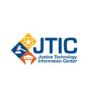The Office of Justice Programs’ National Institute of Justice (NIJ) is developing a standard for bomb suits worn by U.S. public safety bomb technicians. This will be the first such standard.
NIJ is developing NIJ Bomb Suit Standard for Public Safety, NIJ Standard-0117.00 at the request of the National Bomb Squad Commanders Advisory Board (NBSCAB). This standard is being developed based on research done by the U.S. Army Natick Soldier Research, Development, and Engineering Center. An expert panel of bomb technicians, other explosives community stakeholders and scientists used Natick’s research as a foundation to establish the standard.
There are approximately 470 accredited bomb squads in the U. S., and each bomb squad is required to have at least two bomb suits. These bomb suits need to provide protection while at the same time allow for user mobility and dexterity. Establishment of a bomb suit standard with standardized test methods and performance requirements ensures that bomb suits provide an established level of protection balanced with functionality.
“Bomb suits are in the class of equipment that users have difficulty assessing on their own, since their purpose is to protect in circumstances that rarely happen and the consequences of failure are potentially lethal,” says NBSCAB Chairman Jim Hansen. Other project sponsors and supporters include the Office of Standards within the Science and Technology Directorate of the U.S. Department of Homeland Security, the National Institute of Standards and Technology, Biokinetics, the Massachusetts State Police and the Center for
Applied Biomechanics. This is a minimum performance standard for bomb suits worn while performing render safe and disposal procedures. It details minimum design and performance
requirements for equipment and test methods to assess equipment performance, balancing the requirements against a bomb technician’s need for mobility, clear vision and dexterity.
“This standard will help protect our federal, state and local bomb technicians and give them the confidence needed in their equipment, which will help them perform their mission,” says Sgt. Thomas Sharkey, bomb squad commander with the Metro Transit Police Department in Washington, D.C., and a member of the expert panel.
“The bomb suit is the most critical piece of equipment a bomb technician utilizes,” Sharkey says. “A standard for the bomb suit reassures that the protection and mobility of the bomb suit is acceptable to the bomb technician and the bomb squad community. This is critical in the success of their mission.”
Optics and ergonomics capability are tested through donning and doffing, field of view and mobility tests. The standard also includes fragmentation, flame, impact and blast overpressure protection.
Minimum blast pressure Protection requirements are addressed through a bomb suit integrity test to determine if the suit remains intact during an explosion. Blast overpressure will be fully addressed in a subsequent version of the standard once additional research provides NIJ with a better understanding of the threats posed by blast overpressure. Also, the standard does not address chemical, biological, radiological and nuclear (CBRN) protection, which may be addressed in the future when additional research is done.
“NBSCAB supports the development of credible standards for bomb suits against each of the hazards posed by IEDs,” Hansen says. “The recent development of ergonomics, fragmentation, impact, flame and optics standards has been very important. The bomb squad community also looks forward to the development of additional standards dealing with blast overpressure, cooling suits and chem/bio protection that is integrated nto bomb suits.”
“With more terrorism events possible, there may be more situations when bomb technicians have to respond,” says Casandra Robinson, an NIJ visiting scientist from the Department of Energy Savannah River National Laboratory who facilitated development of the standard. “We want to make sure their equipment protects them.”
Separate documents will cover certification requirements (NIJ Bomb Suit Certification Program Requirements for NIJ Standard 0117.00) and guidance on selection and application of bomb suits (NIJ Selection and Application Guide to Bomb Suits). Manufacturer compliance with the standard, as with all NIJ standards, is voluntary.
To view a copy of the standard, certification document or selection and application guide once they are published, visit http://www.justnet.org/ctp.
This article was reprinted from the Fall 2009 edition of TechBeat, the award-winning quarterly newsmagazine of the National Law Enforcement and Corrections Technology Center System, a program of the National Institute of Justice under Cooperative Agreement #2005–MU–CX–K077, awarded by the U.S. Department of Justice.











